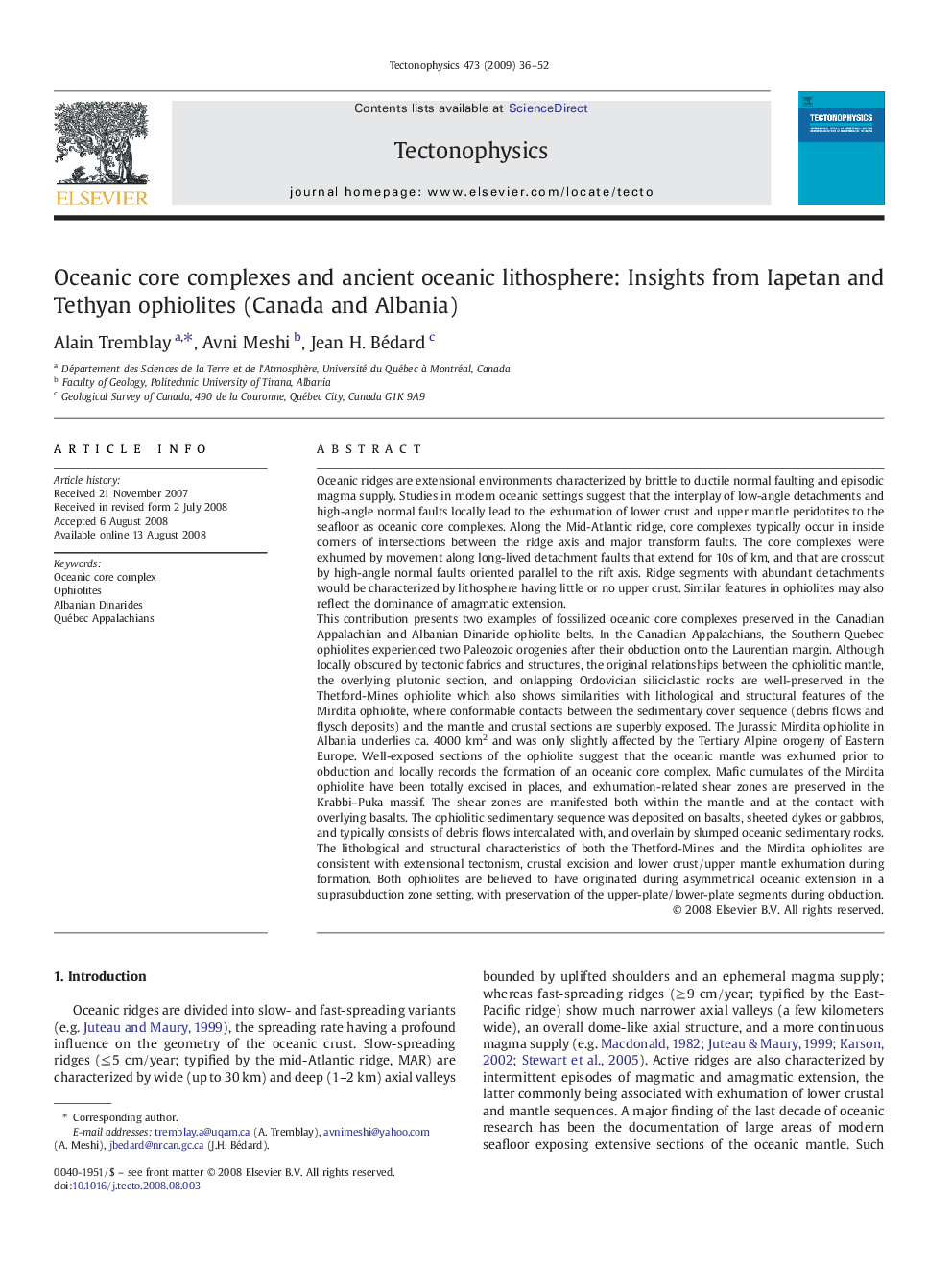| کد مقاله | کد نشریه | سال انتشار | مقاله انگلیسی | نسخه تمام متن |
|---|---|---|---|---|
| 4693993 | 1636889 | 2009 | 17 صفحه PDF | دانلود رایگان |

Oceanic ridges are extensional environments characterized by brittle to ductile normal faulting and episodic magma supply. Studies in modern oceanic settings suggest that the interplay of low-angle detachments and high-angle normal faults locally lead to the exhumation of lower crust and upper mantle peridotites to the seafloor as oceanic core complexes. Along the Mid-Atlantic ridge, core complexes typically occur in inside corners of intersections between the ridge axis and major transform faults. The core complexes were exhumed by movement along long-lived detachment faults that extend for 10s of km, and that are crosscut by high-angle normal faults oriented parallel to the rift axis. Ridge segments with abundant detachments would be characterized by lithosphere having little or no upper crust. Similar features in ophiolites may also reflect the dominance of amagmatic extension.This contribution presents two examples of fossilized oceanic core complexes preserved in the Canadian Appalachian and Albanian Dinaride ophiolite belts. In the Canadian Appalachians, the Southern Quebec ophiolites experienced two Paleozoic orogenies after their obduction onto the Laurentian margin. Although locally obscured by tectonic fabrics and structures, the original relationships between the ophiolitic mantle, the overlying plutonic section, and onlapping Ordovician siliciclastic rocks are well-preserved in the Thetford-Mines ophiolite which also shows similarities with lithological and structural features of the Mirdita ophiolite, where conformable contacts between the sedimentary cover sequence (debris flows and flysch deposits) and the mantle and crustal sections are superbly exposed. The Jurassic Mirdita ophiolite in Albania underlies ca. 4000 km2 and was only slightly affected by the Tertiary Alpine orogeny of Eastern Europe. Well-exposed sections of the ophiolite suggest that the oceanic mantle was exhumed prior to obduction and locally records the formation of an oceanic core complex. Mafic cumulates of the Mirdita ophiolite have been totally excised in places, and exhumation-related shear zones are preserved in the Krabbi–Puka massif. The shear zones are manifested both within the mantle and at the contact with overlying basalts. The ophiolitic sedimentary sequence was deposited on basalts, sheeted dykes or gabbros, and typically consists of debris flows intercalated with, and overlain by slumped oceanic sedimentary rocks. The lithological and structural characteristics of both the Thetford-Mines and the Mirdita ophiolites are consistent with extensional tectonism, crustal excision and lower crust/upper mantle exhumation during formation. Both ophiolites are believed to have originated during asymmetrical oceanic extension in a suprasubduction zone setting, with preservation of the upper-plate/lower-plate segments during obduction.
Journal: Tectonophysics - Volume 473, Issues 1–2, 20 July 2009, Pages 36–52